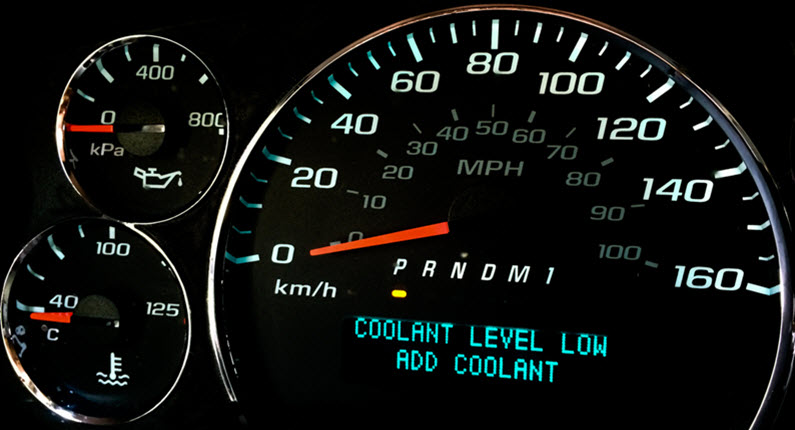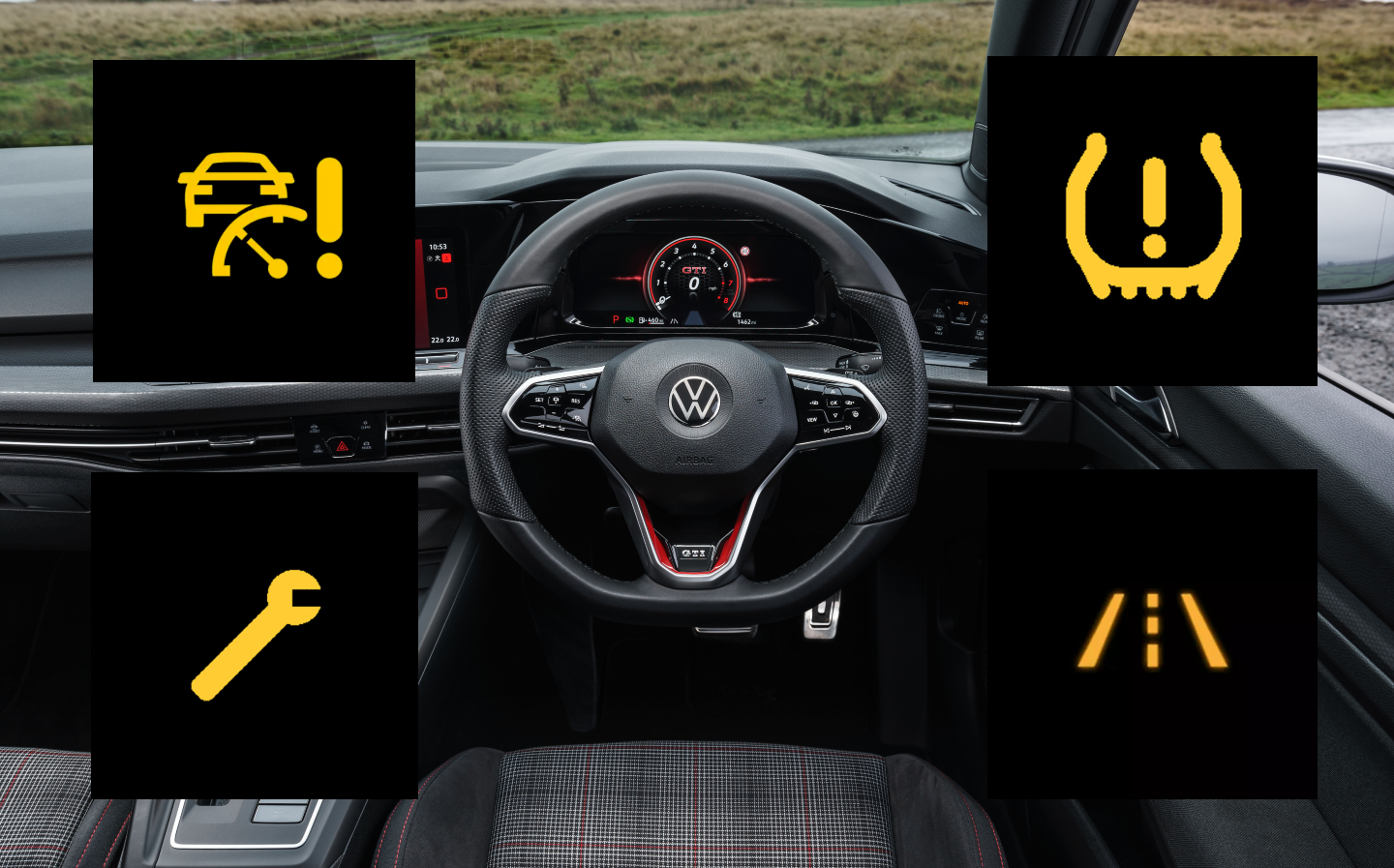As an Amazon Associate, I earn from qualifying purchases at no extra cost to you.
Volkswagen Coolant Warning Light: Vital Tips for Handling
The Volkswagen coolant warning light indicates an issue with the coolant system in your Volkswagen vehicle. So, it is essential to address the problem promptly to prevent engine damage and overheating.
Neglecting the warning light can lead to costly repairs and potential breakdowns on the road. We will discuss what the coolant warning light means, possible causes, and what actions you should take when this warning light appears on your Volkswagen dashboard.
Stay informed and learn how to keep your Volkswagen running smoothly and safely.
Credit: tillemaauto.com
Understanding The Volkswagen Coolant Warning Light
The Volkswagen coolant warning light is an important indicator that can protect your car from potential overheating and damage. Understanding this warning light is crucial for maintaining the health and longevity of your vehicle. This blog post will provide insights into the significance of the Volkswagen coolant warning light, allowing you to respond promptly and effectively when it activates.
What Is The Coolant Warning Light?
The coolant warning light in a Volkswagen acts as an early alert system to notify drivers of potential issues with the car’s cooling system. It typically resembles a thermometer or a similar symbol, and when illuminated, it indicates a problem that requires immediate attention. This alert is triggered when the engine temperature exceeds the normal operating range, signaling a potential risk of overheating.
Importance Of The Coolant Warning Light
The coolant warning light serves as a proactive measure to prevent engine damage and maintain optimal performance. By monitoring coolant levels and temperature, this warning light aids in identifying issues such as leaks, low coolant levels, or malfunctioning cooling system components. Promptly addressing the warning can prevent severe engine damage and costly repairs, ensuring the longevity of your Volkswagen.

Credit: www.heynnemaneuropean.com
Common Causes Of The Coolant Warning Light
Low Coolant Level
When your Volkswagen’s coolant level is low, it can trigger the warning light to illuminate, indicating a potential issue.
Coolant Leak
A coolant leak can lead to a decrease in coolant levels, causing the warning light to come on and signaling a leak in the system.
Faulty Radiator Cap
If the radiator cap is not functioning properly, it may result in a drop in coolant levels and activate the warning light.
How To Respond To The Coolant Warning Light
When you see the Volkswagen Coolant Warning Light illuminate on your dashboard, it’s crucial to take immediate action to prevent potential damage to your vehicle. By understanding how to respond to this warning light, you can ensure the health and performance of your car.
Immediate Actions
- Stop your vehicle safely to prevent overheating.
- Turn off the engine and allow it to cool down.
- Do not attempt to open the radiator cap when the engine is hot.
Checking The Coolant Level
To address the Volkswagen Coolant Warning Light, start by checking the coolant level in the reservoir. Follow these steps:
- Locate the coolant reservoir under the hood.
- Ensure the coolant level is between the min and max marks.
- If the level is low, add the appropriate coolant mixture.
Inspecting For Leaks
Leaks can often trigger the coolant warning light. Inspect your vehicle for leaks by following these steps:
- Check the ground under your parked car for any coolant puddles.
- Look for signs of coolant leakage around hoses and connections.
- If you notice leaks, address them promptly to prevent further issues.
Examining The Radiator Cap
The radiator cap plays a crucial role in maintaining proper coolant pressure. To ensure it’s functioning correctly:
- Only check the radiator cap when the engine is cool.
- Inspect the cap for any signs of wear or damage.
- Tighten or replace the cap if necessary to maintain pressure.

Credit: www.driving.co.uk
Preventive Measures To Avoid Coolant Issues
Routine Coolant Checks And Maintenance
Regularly checking the coolant level and condition of your Volkswagen’s coolant system is paramount in preventing potential issues. Conduct visual checks and monitor the temperature gauge for any irregularities. Plan routine coolant flushes and replacements as advised in your vehicle’s manual.
Properly Maintaining The Radiator
Optimal radiator maintenance contributes significantly to the overall health of the coolant system. Keep the radiator clean and free from debris to ensure efficient cooling. Regularly inspect for leaks or corrosion that may lead to coolant problems.
Using The Correct Coolant And Mix Ratio
It’s crucial to use the recommended coolant type and maintain the appropriate mix ratio to prevent issues. Ensure the coolant you use is compatible with your Volkswagen’s model.
Seeking Professional Assistance
Seeking professional assistance is crucial when dealing with a Volkswagen coolant warning light. This light indicates that there may be an issue with the coolant system, which can lead to serious engine problems if left unaddressed. If you see this warning light illuminate on your dashboard, it’s important to take action promptly to prevent any further damage to your vehicle.
When To Seek Professional Help
There are several situations when it becomes necessary to seek professional help for your Volkswagen coolant warning light. Consider the following scenarios when deciding whether to consult a qualified mechanic:
- If the warning light is continuously illuminated, it is recommended to seek immediate professional assistance. This could indicate a significant coolant leak or a faulty sensor that needs immediate attention. Professional help will allow for proper diagnosis and repair.
- When the coolant warning light is accompanied by other symptoms such as overheating, a noticeable decrease in engine performance, or strange noises, it is crucial to seek professional assistance. These additional signs may point to more complex issues that require the expertise of a trained mechanic.
- If you are unsure about the cause of the coolant warning light, it is always better to err on the side of caution and seek professional help. A qualified mechanic will have the necessary knowledge and diagnostic tools to accurately identify and resolve the underlying problem.
Choosing A Reliable Mechanic
Selecting a reliable mechanic is an important step in addressing your Volkswagen coolant warning light. Here are some key factors to consider when choosing a professional for this job:
- Look for a mechanic who specializes in Volkswagen vehicles or has experience working with coolant system issues. Their familiarity with these specific areas can ensure a more accurate diagnosis and efficient repairs.
- Read reviews and gather recommendations from friends, family, or online forums. A good reputation and positive customer feedback can give you confidence in the mechanic’s expertise and reliability.
- Check that the mechanic is certified and licensed to work on Volkswagen vehicles. This ensures that they have received proper training and adhere to industry standards.
- Get estimates from different mechanics to compare prices and ensure you are getting a fair deal. However, prioritize quality of service over cost, as incorrect repairs can potentially lead to more expensive issues down the line.
Tips For Vehicle Coolant Safety
When it comes to maintaining the health and performance of your Volkswagen, paying attention to the coolant warning light is crucial. The coolant warning light indicates that the engine is overheating or that the coolant level is low. Ignoring this warning can lead to serious engine damage and costly repairs. To ensure your safety on the road, it is essential to understand the dangers of hot coolant, follow the necessary safety precautions when dealing with coolant, and dispose of it properly.
Understanding The Dangers Of Hot Coolant
Hot coolant can pose significant risks if not handled properly. The high temperatures can cause severe burns and injuries when in direct contact with skin or eyes. Moreover, the pressure build-up in the cooling system can result in sudden coolant leaks or even coolant explosions, leading to further damage and potential harm to you and those around you.
Safety Precautions When Dealing With Coolant
It is important to take the following safety precautions to protect yourself and others:
- Always wear protective gear: Prioritize your safety by wearing gloves and safety goggles before handling coolant. This will shield you from potential splashes or spills.
- Cool down the engine: Allow the engine to cool down before attempting to check or add coolant. Opening the radiator cap on a hot engine can cause the coolant to spray out forcefully, resulting in burn injuries.
- Check coolant level carefully: Use a dipstick or a coolant reservoir to check the coolant level. Avoid opening the radiator cap until the engine has cooled off.
- Use proper coolant mix: Ensure the coolant you use is compatible with your vehicle’s specifications and mix it with the appropriate amount of water as recommended by the manufacturer.
Proper Coolant Disposal Methods
It is crucial to dispose of coolant responsibly to prevent harm to the environment and comply with local regulations. Here are some proper coolant disposal methods:
- Never pour coolant down the drain: Coolant is toxic and harmful to aquatic life. Dispose of it through a local recycling center or hazardous waste facility to ensure it is treated and recycled properly.
- Seal and store used coolant: If you are unable to immediately dispose of the coolant, store it in sealed containers labeled as “used coolant” and ensure it is out of reach of children and pets.
- Do not mix coolant with other substances: Avoid mixing coolant with oil, fuel, or any other substances, as it can contaminate the coolant and make proper disposal more challenging.
By understanding the dangers of hot coolant, practising the necessary safety precautions, and disposing of coolant properly, you can ensure the safety of yourself, others, and the environment. Take these precautions seriously to avoid potential engine damage, injuries, and negative impacts on the planet.
Conclusion
In case your Volkswagen’s coolant warning light comes on, it's crucial to take immediate action to prevent engine damage. Ignoring this indication can lead to severe consequences and costly repairs. Ensure to regularly check your coolant levels and seek professional assistance from a qualified mechanic for a thorough inspection and any necessary repairs.





